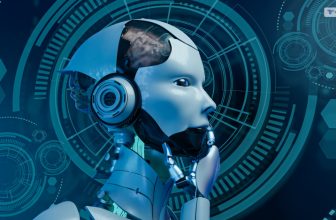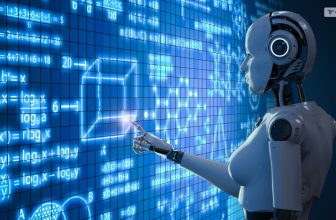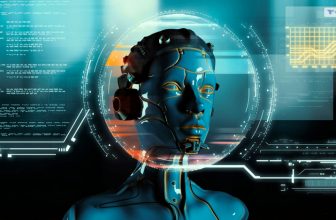
Machine learning is one of the most exciting and rapidly evolving fields in the world of technology. It is the science of making computers learn from data and perform tasks that would otherwise require human intelligence. Machine learning engineers are in high demand across various industries, such as healthcare, finance, e-commerce, entertainment, etc. But how do you become a machine learning engineer?
What skills and qualifications do you need? How long does it take to learn machine learning? What are the best institutes to study machine learning? What are the job prospects and salary of a machine learning engineer?
In this article, I will answer all these questions and more. I will provide you with a step-by-step guide on how to become a machine learning engineer. So, if that is something that you want to know, I have you covered! Keep on reading this blog till the end to learn more…
What is Machine Learning?

Machine learning is a way of making computers learn from data and perform tasks that would normally require human intelligence. For example, machine learning can help computers recognize faces, translate languages, play games, and recommend products.
But how does machine learning work? Well, it depends on the type of machine learning, but the general idea is that you need three things: data, algorithm, and model.
- Firstly, data is the information you want the computer to learn. It can be anything, such as images, text, speech, or numbers. Data can be labeled, which means it has a known output or answer, or unlabeled, which means it does not have a known output or answer.
- Secondly, an algorithm is a set of rules or instructions that tells the computer how to learn from the data. It can be simple, such as finding the average or the maximum, or complex, such as finding patterns or structures. The algorithm can be supervised, which means it learns from labeled data, or unsupervised, which means it learns from unlabeled data.
- Finally, the model is the result or outcome of the algorithm. It is what the computer learns from the data. It can be a function, a formula, a graph, a table, or a network. Models can be used to make predictions or decisions for new or unseen data.
So, machine learning is basically a process of feeding data to an algorithm and getting a model that can do something useful.
Of course, there is a lot more to machine learning than this, but this is the basic idea. Machine learning is a fascinating and powerful field that can help us solve many problems and create many opportunities.
Why is Machine Learning Becoming a Popular Career Path?

Machine learning is becoming a popular career path because it is a field that offers many opportunities, challenges, and rewards for those who are interested in data, automation, and algorithms.
Machine learning is in high demand and low supply. According to Indeed, the number of job postings for machine learning engineers increased by more than 330% from 2015 to 2018. The average salary for a machine learning engineer in the USA is around $153,252 annually, which is higher than most other job roles.
This is a versatile and diverse field. Moreover, it can be applied to various domains and industries, such as technology, finance, healthcare, education, entertainment, and more.
Machine learning can also be used for various tasks and applications, such as image processing, natural language processing, speech recognition, recommendation systems, self-driving cars, and more.
Machine learning is exciting and innovative. It is a field that is constantly evolving and advancing as new techniques, algorithms, and frameworks are developed and improved. Machine learning is also a field that can solve complex and real-world problems and create new possibilities and opportunities.
Machine learning is accessible and learnable. It is a field that can be learned by anyone who has curiosity and passion for it. Many online resources and platforms, such as courses, books, videos, blogs, and competitions, can help anyone learn machine learning. It also welcomes people from different backgrounds and experiences if they have the relevant skills and knowledge.
So, if you are looking for a career that is rewarding, challenging, and fun, machine learning might be the one for you. Machine learning is a field that can offer you a fulfilling and lucrative career if you are willing to learn and grow with it.
What are the Best Paid Jobs in Machine Learning?
Machine learning is a field that uses computers to learn from data and perform tasks that require human intelligence. Machine learning professionals are in high demand and can earn high salaries across various industries and domains.
Here are some of the top five best-paid jobs in machine learning:
Machine learning engineer
Firstly, an ML engineer builds the frameworks that allow artificial intelligence to develop without additional programming. They use software development, machine-learning algorithms, and programming languages such as Python and Java to create and deploy machine learning systems and applications. The average salary for a machine learning engineer in the USA is around $153,252 per year.
Data scientist
Secondly, we have a data scientist or data analyst. They use machine learning to extract useful information from large and complex data sets. Closely related to machine learning, they use statistical and computational methods, tools, and platforms. Some of them are TensorFlow and Google Analytics, which perform data preprocessing, analysis, and visualization. Furthermore, they also communicate their findings and insights to stakeholders and clients. The average salary for a data scientist in the USA is around $113,309 per year.
AI engineer
Thirdly, AI engineers specialize in artificial intelligence and machine learning. They design, develop, and maintain AI systems and solutions, such as chatbots, voice assistants, recommendation systems, and self-driving cars.
They use various AI techniques and frameworks, such as deep learning, reinforcement learning, computer vision, and natural language processing.
The average salary for an AI engineer in the USA is around $146,085 annually.
Computer vision engineer
Computer Vision Engineering is a type of machine learning engineer that focus on computer vision. It deals with understanding and processing visual information, such as images and videos.
Furthermore, they use image processing, feature extraction, segmentation, classification, detection, recognition, tracking, and generation techniques and algorithms to perform tasks such as face detection, face recognition, optical character recognition, scene understanding, image captioning, and style transfer.
The average salary for a computer vision engineer in the USA is around $158,303 annually.
Natural language processing scientist
Lastly, we have NLP scientists. This machine learning scientist focuses on natural language processing, which deals with understanding and processing natural languages, such as text and speech. Additionally, they perform tasks such as spam filtering, sentiment analysis, text summarization, machine translation, question answering, and chatbots.
They use tokenization, stemming, lemmatization, part-of-speech tagging, parsing, sentiment analysis, topic modeling, text summarization, machine translation, question answering, and chatbot techniques and algorithms.
The average salary for a natural language processing scientist in the USA is around $114,121 per year.
How to Become a Machine Learning Engineer?

Now that you know that machine learning is a great career path, it is time for you to learn how to be one.
That is why I am here to help you. Here are the steps that you need to take to become a machine learning engineer:
1. Learn the fundamentals of programming and mathematics
The first step to becoming a machine learning engineer is to learn the fundamentals of programming and mathematics. Programming is the skill of writing instructions for computers to execute. Mathematics is the language of logic and reasoning that underlies all scientific and engineering disciplines.
Nevertheless, both are essential for machine learning, as you will need to write code to implement machine learning algorithms and use mathematical concepts to understand and analyze data.
Some programming languages commonly used for machine learning are Python, R, Java, C++, and MATLAB. However, Python is especially popular because of its simplicity, readability, and rich machine learning tools and frameworks library.
Some of the relevant mathematical topics for machine learning are linear algebra, calculus, statistics, probability, and optimization. These topics will help you manipulate data, perform computations, measure performance, and optimize results.
2. Learn the basics of machine learning and data science
Secondly, it is important for you to learn the basics of machine learning and data science.
Machine learning is the branch of computer science that deals with creating systems that can learn from data and make predictions or decisions.
Data science is an interdisciplinary field that involves collecting, processing, analyzing, and communicating data to solve problems and generate insights.
3. Learn the advanced topics and applications of machine learning
The third step to becoming a machine learning engineer is to learn the advanced topics and applications of machine learning. Machine learning is a vast and diverse field with many subfields and domains.
Moreover, as a machine learning engineer, you should be familiar with some of the advanced topics and applications of machine learning that are relevant to your industry or domain of interest.
Some of the advanced topics and applications of machine learning are:
Deep learning
Deep learning uses deep neural networks, which are composed of multiple layers of artificial neurons that can learn complex and nonlinear patterns and features from data.
It is especially powerful for dealing with high-dimensional, unstructured, and sequential data, such as images, text, speech, and video.
Some of the common deep-learning tasks are image classification, object detection, face recognition, natural language processing, speech recognition, and natural language generation. Some of the common deep learning frameworks are TensorFlow, PyTorch, Keras, and MXNet.
Reinforcement learning
Reinforcement learning deals with learning from trial and error, based on rewards and penalties. It is suitable for dynamic and interactive environments, where the system must learn how to act or behave optimally to achieve a goal or maximize a reward.
Some of the common reinforcement learning tasks are game playing, robot control, self-driving cars, and recommendation systems. Some of the common reinforcement learning algorithms are Q-learning, SARSA, policy gradient, actor-critic, and deep Q-network.
Computer vision
Computer vision deals with understanding and processing visual information, such as images and videos.
It involves applying various techniques and algorithms to perform tasks such as image processing, feature extraction, segmentation, classification, detection, recognition, tracking, and generation.
Some of the common computer vision applications are face detection, face recognition, optical character recognition, scene understanding, image captioning, and style transfer.
Natural language processing
Natural language processing deals with understanding and processing natural language, such as text and speech. NLP involves applying various techniques and algorithms to perform tasks such as tokenization, stemming, lemmatization, part-of-speech tagging, parsing, sentiment analysis, topic modeling, text summarization, machine translation, question answering, and chatbots.
Some of the common natural language processing applications are spam filtering, sentiment analysis, text summarization, machine translation, question answering, and chatbots.
4. Build your portfolio and network
The fourth step to becoming a machine learning engineer is to build your portfolio and network. A portfolio is a collection of your projects and work samples showcasing your machine learning skills and abilities.
A network is a group of people who share your interests and goals in machine learning and who can help you with opportunities and feedback. Both are important for landing a job as a machine learning engineer. This is because they can demonstrate your competence and credibility and connect you with potential employers and collaborators.
To build your portfolio, you should work on various machine learning projects individually or in a team and document your process and results. You should choose projects relevant to your industry or domain of interest that are challenging and interesting for you.
You should also use different tools and frameworks and apply different techniques and algorithms to showcase your versatility and creativity. Additionally, you should also publish your projects on platforms such as GitHub, Kaggle, Medium, or your own website or blog and share them with your network and the machine learning community.
To build your network, you should participate in various machine learning events, such as meetups, workshops, hackathons, conferences, and competitions. These events can help you meet and interact with other machine learning enthusiasts, experts, mentors, and employers.
You can also join online platforms and communities, such as LinkedIn, Twitter, Reddit, Stack Overflow, and Quora, where you can follow, connect, and engage with machine learning influencers, peers, and recruiters. You should also showcase your portfolio and skills on these platforms and seek feedback and advice from your network and the machine learning community.
5. Apply for machine learning jobs and prepare for interviews
The final step to becoming a machine learning engineer is to apply for machine learning jobs and prepare for interviews. Machine learning jobs are available in various sectors, such as technology, finance, healthcare, education, entertainment, and more.
You can find machine learning jobs on various platforms, such as Indeed, Glassdoor, Monster, LinkedIn, and AngelList. You can also use your network and referrals to find machine learning opportunities.
When applying for machine learning jobs, you should tailor your resume and cover letter to the specific role and company that you are applying for. You should highlight your relevant skills, experience, education, and projects in machine learning. Additionally, provide links to your portfolio and online profiles, where the recruiters can see your work and achievements in machine learning.
When preparing for machine learning interviews, you should review your machine learning concepts and skills and practice your coding and problem-solving abilities.
You should also research the company and the role you are applying for and prepare some questions for the interviewer. You should also be ready to explain your machine learning projects and portfolio and demonstrate your passion and enthusiasm for machine learning.
What are Some Topics to Learn in Machine Learning?

Now that you know how to become a machine learning engineer, let me help you out in knowing what topics you might have to learn. Here is a list that you must check out before you leave:
Data preprocessing
Data processing is the process of cleaning, transforming, and preparing data for machine learning. It involves handling missing values, outliers, duplicates, noise, and inconsistencies.
It also involves selecting, scaling, encoding, and reducing features. Moreover, data preprocessing is important because it improves the quality and efficiency of machine learning models.
Supervised learning
Supervised Learning is the type of machine learning where the system learns from labeled data, that is, data with a known output or target variable.
This aims to train the system to predict the output or target variable for new or unseen data. Some of the common supervised learning tasks are classification, regression, and ranking.
Common supervised learning algorithms include linear regression, logistic regression, k-nearest neighbors, decision trees, support vector machines, and neural networks.
Unsupervised learning
Unsupervised learning is the type of machine learning where the system learns from unlabeled data, that is, data that does not have a known output or target variable.
It aims to discover patterns, structures, or hidden information in the data. Common unsupervised learning tasks include clustering, dimensionality reduction, anomaly detection, and association rule mining.
Some of the common unsupervised learning algorithms are k-means, principal component analysis, singular value decomposition, autoencoders, and apriori.
Evaluation and validation
Evaluation and validation are the process of measuring and assessing the performance and accuracy of machine learning models. It involves splitting the data into training, validation, and test sets, and applying various metrics and techniques to compare and select the best model.
Some of the common evaluation and validation metrics and techniques are accuracy, precision, recall, f1-score, confusion matrix, ROC curve, AUC, cross-validation, and grid search.
Wrapping It Up!
To learn the advanced topics and applications of machine learning, you can take online courses, read books, watch videos, or enroll in a formal degree or certificate program. Some of the popular online platforms that offer courses on advanced machine learning are Coursera, edX, Udemy, DataCamp, and Kaggle.
If you want to know about how to become a machine learning engineer, I hope that this blog has been of help to you. If there are any other queries related to the same, please feel free to let me know. All that you need to do is scroll down till you reach the bottom of the page. And I will be there to answer them all for you!
Read Also:

![The Step-by-Step Guide on How to Become a Machine Learning Engineer [Beginner’s Guide]](https://techtrendspro.com/wp-content/uploads/thumbs_dir/Rise-Of-NFT-Market-qk8g58tdtshuvs7lq42kc5e4wz8olghdw189cof58c.jpg)
![The Step-by-Step Guide on How to Become a Machine Learning Engineer [Beginner’s Guide]](https://techtrendspro.com/wp-content/uploads/thumbs_dir/Regularization-in-machine-learning-qkf8ylxkk3bsbwb2v8kutmlw5lag1zxfa4y7zqr9rw.jpg)



